"The Bane of the Century" or the discovery of Dr. Schrader
Poisons of organic and mineral origin are known to mankind since ancient times. It can be assumed that even in the Neolithic era, primitive people used the smoke of some plants to smoke out predators from habitable caves. It is reliably known that in ancient times and the Middle Ages incendiary ceramic projectiles were used for throwing guns equipped with resin, sulfur and dried leaves of plants. In addition to the incendiary effect, when burning this mixture, suffocating smoke was released, making it difficult to extinguish fires.
In the 19 century, poisonous substances began to be used during large scale military operations. During the Crimean War, during the siege of Sevastopol, the British army used sour gas to “smoke out” the defensive Russian garrisons from engineering structures. Later, in the 1899 — 1902, during the Anglo-Boer War, the British used artillery shells filled with picric acid, capable of causing vomiting in victims.
However, the mass adoption of weapons of chemical warfare occurred during the 1-th World War. Prerequisites for widespread use in the war of poisonous substances formed as a result of the development of the chemical industry.
The first gas attack was carried out by the Germans on the Western Front near the town of Ypres (Belgium) 22 on April 1915. At the front of the attack, gas-cylinder batteries were installed in 6 km, 20 gas cylinders each were installed, which required 180 000 kg of chlorine to fill. The actions on the flanks were intensified by the firing of chemical shells. The output of the gas wave continued 5 min.
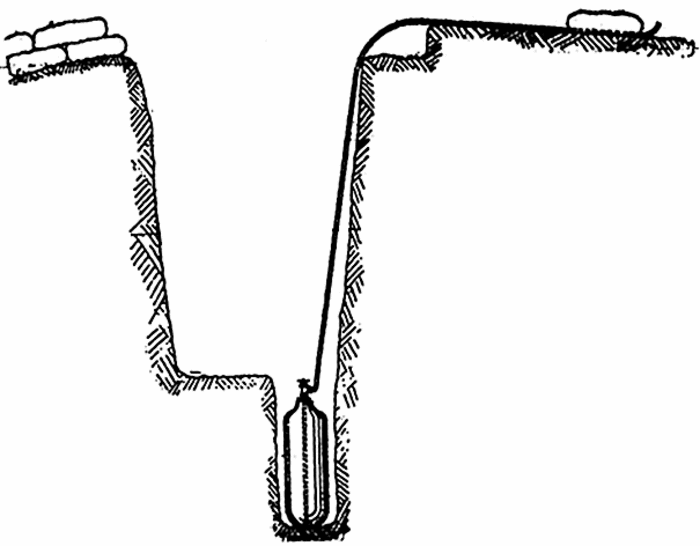
The effect of chlorine was overwhelming. In the French defense there was a gap in 8 km along the front and 10 km in depth. The number of poisoned reached 15 thousands, of which 5 thousands died on the battlefield. When released from cylinders into the atmosphere, chlorine evaporates instantly, forming a yellow-green cloud of a poisoned atmosphere.
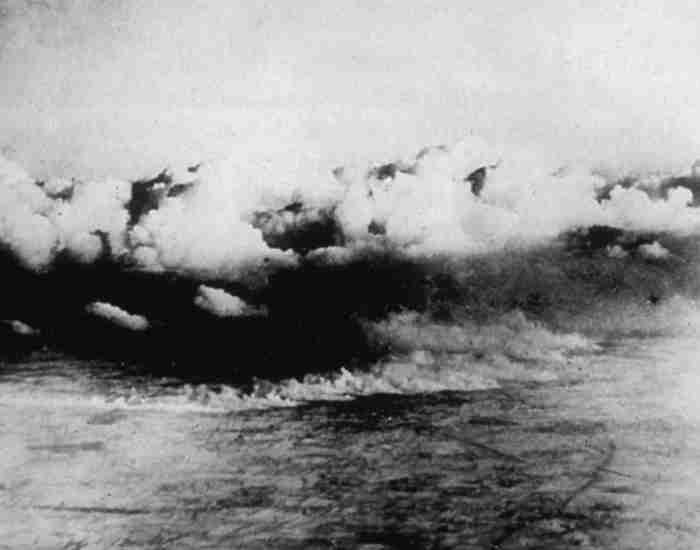
Inhalation of air with a high concentration of chlorine causes bronchospasm and death from suffocation. With smaller doses of chlorine, after a few hours of imaginary well-being, pulmonary edema develops, which can also lead to death. Those injured who have escaped death remain disabled until the end of their days due to pulmonary insufficiency, vulnerability to infections and inflammatory processes.
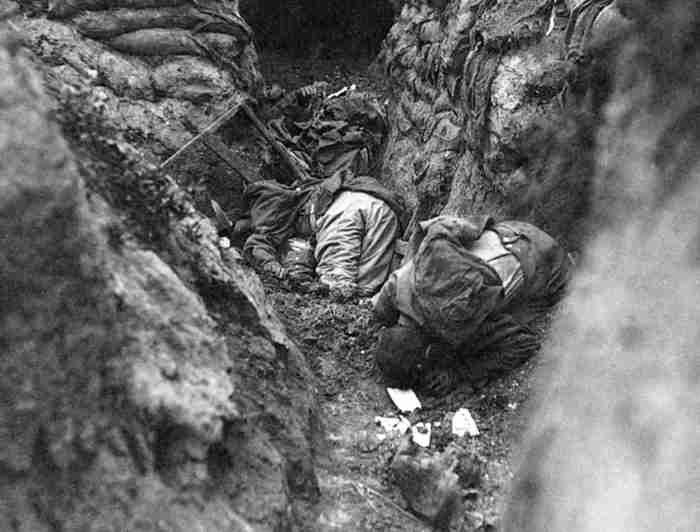
Subsequently, the German chemical arsenal was replenished with poisonous substances: phosgene and mustard. At the first use of mustard on the allied forces that had been prepared for the offensive, on the night from 12 to 13 in July 1917, the Germans fired 50 thousands of chemical artillery shells. Lesions of varying severity were 2 490 people, of whom 87 died. The offensive of the Anglo-French troops was foiled.
Toxic agents have declared themselves as a formidable new form. weapons. And the number of losses from chemical weapons in war, and neuropsychological factors that increase the effects of poisonous substances on people, contributed to this. By the end of 1916, the production of chemical warfare agents and means of protection had been established in all leading States of the war, chemical weapons were repeatedly used by all parties to the conflict.
The ideas of chemical warfare took firm positions in the military doctrines of all developed countries of the world without exception, and after the end of the 1 World War, its improvement and development continued. By the beginning of the 20-s, in addition to chlorine, chemical arsenals included: phosgene, adamsite, chloroacetophenone, mustard gas, hydrocyanic acid, chlorocyan and nitrogenous mustard gas.
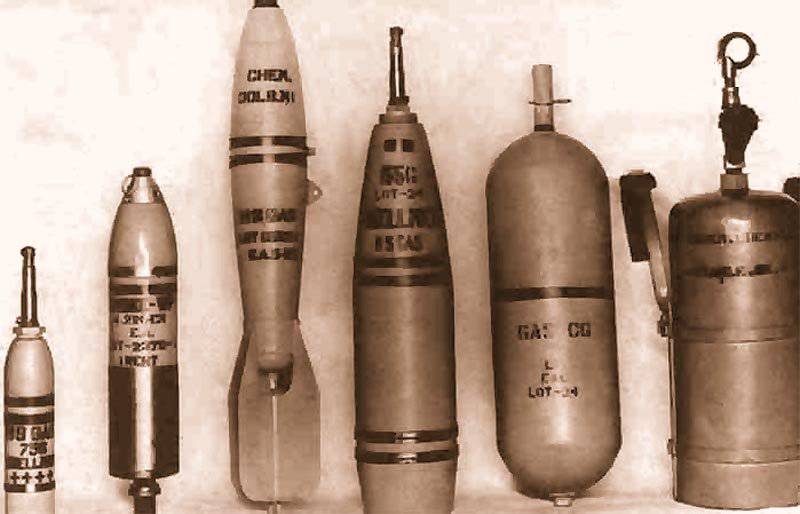
Between the world wars, toxic substances were repeatedly used during local conflicts. In 1935, Italy during the armed conflict with Ethiopia used artillery shells and aviation bombs equipped with mustard gas and phosgene, as well as mustard gas with the help of aviation pouring devices. Japan used toxic substances during the war with China in 1937-1943.
According to the Versailles Peace Treaty, Germany did not have the right to develop and produce offensive weapons - airplanes, Tanks and chemical weapons. Nevertheless, research in the field of chemical weapons continued. Unable to conduct large-scale tests on its territory, Germany in 1926 entered into an agreement with the USSR on the creation of the Tomka chemical test site in Shihan. The creation of this military-chemical training ground took place in conditions of conspiracy. The Soviet-German agreement on joint activities in the framework of the Tomka project was signed on behalf of front joint-stock companies. The agreement on behalf of the USSR was concluded by the Joint-Stock Company “on Pest Control and the Use of Artificial Fertilizers”, and on behalf of Germany, the Joint-Stock Company “on the Use of Raw Materials”. In the text of the agreement, howitzers were called throwing devices, shells - balls, etc. Beginning in 1928, in Shihan, the Tomka project carried out intensive tests of various methods of using toxic substances, means of chemical protection and methods of degassing the area.
Adolf Hitler, who came to power in Germany at the beginning of 1933, broke with the Versailles Treaty and transferred the chemical tests to his territory. In the summer of 1933, the Soviet-German cooperation in this area was completely curtailed.
The traditionally high level of development of the German chemical industry and the presence of an excellent theoretical base allowed German chemists to make a breakthrough in the field of chemical warfare agents at the end of the 30s. In 1936, the German chemist Dr. Gerhard Schrader, in the course of research on the creation of means for combating insects, in the laboratory of insecticides "IG Farben" synthesized phosphoric acid ethyl ester cyanamide - a substance which later became known as "Tabun". This discovery predetermined the direction of the development of chemical warfare agents (BOV) and became the first in a series of military paralytes.
The lethal dose of the herd during inhalation is 8 times less than that of phosgene. Death of the herd occurs no later than in 10 minutes. Ta¬bun immediately attracted attention as a powerful poison at that time. In 1940, the construction of a plant for the production of a herd in Dyhernnurche a der Oder near Breslau was started, which was put into operation in May 1943. By April 1945, 8770 tons of this toxic substance had been accumulated in Germany.
Developing success, G. Schrader in the year 1939 synthesized “sarin” - methyl fluorophosphonic acid isopropyl ether. Sarin is approximately 5 times as high as herd inhalation toxicity. From June 1944, the sarin began to be fabricated on a pilot process unit. By the end of the war, sarin reserves in Germany amounted to 1260 tons.
At the end of 1944, a structural analogue of sarin was obtained in Germany, called the "s and man." Soman is about 3 times more toxic than sarin. Soman until the very end of the war was at the stage of laboratory and technological research and development. A total of about 20 tons of soman were produced.
Sarin and soman in terms of their toxic and physicochemical properties are substantially superior to previously known toxic substances. They are suitable for use without restrictions on weather conditions. They can be dispersed by explosion to the state of steam or fine aerosol. Soman in the thickened state can be used both in artillery shells and aerial bombs, and with the help of poured aviation instruments. With severe lesions, the latent period of action of these toxic substances is practically absent. Death of the affected comes from paralysis of the respiratory center and heart muscle.
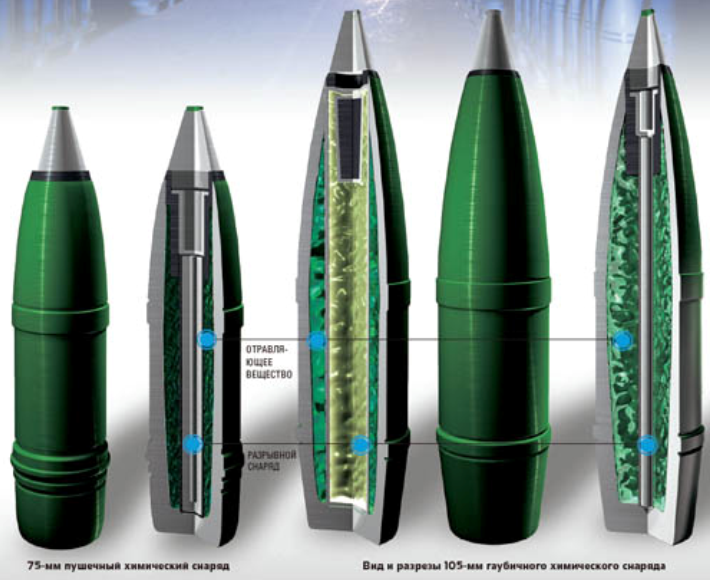
By creating a new generation of chemical weapons and organizing the industrial production of sarin and herd secretly from the allies of the anti-Hitler coalition, Germany gained a clear advantage over them in the field of chemical weapons. In the event of a chemical war unleashing with the use of a herd, sarin and to some extent a soman, the allies would have been confronted with the problems of protecting the troops against these toxic substances that were unresolved during the last years of the war. The reciprocal use of mustard gas, phosgene and other toxic substances, which formed the basis of their chemical arsenal, did not provide an adequate effect.
The Allied armies did not have the necessary means of protection against herd and sarin. There were no antidotes, gas detectors and degassing solutions. The protective uniforms, which consisted in the supply of the Allied armies, were suitable for protecting the body from mustard gas and lewisite vapor, but did not possess any insulating properties against organophosphate agents. Fortunately for the Allied armies, the use of herd and sarin against them did not take place. The reasons why Germany, doomed to defeat in the war by conventional means, did not try to change the course of the war in its favor with the help of the latest chemical weapons, has not yet been disclosed.
After the end of hostilities, the German chemical arsenals, technological equipment, documentation and specialists were used by the allies to organize their own production of similar second-hand agents and the development of new formulations.
Trapped in the Soviet zone of occupation, the herd manufacturing plant and the sarin synthesis technological installation were dismantled and transported to Stalingrad (now Volgograd), where later the manufacture of Soviet chemical weapons using German technology was organized.
With the participation of German specialists led by G. Schrader in the United States, by 1952, a newly built sarin plant in the Rocky-Mountain arsenal (Denver, Colorado) was launched at full capacity.
The success of German chemists, who discovered herd, sarin and soman, led to a sharp expansion of the scale of work on the search for new toxic substances conducted in the United States, the Soviet Union and in other countries. The result was not long in coming. Already in 1952, Dr. Ranadzhi Gosh, an employee of the laboratory of plant protection chemicals of the English concern Imperial Chemical Industries, synthesized an even more toxic substance from the class of phosphorylthiocholines. The British, in accordance with the trilateral agreement between the United States, Britain and Canada on the problem of chemical weapons and protection from them, information on the discovery of a highly toxic substance was transferred to Edgewood arsenal of the US Army for testing and evaluation.
On the basis of the substance obtained by R. Gosh in the USA, it was accepted into service and production of nerve-paralytic CEL known as VX was started. In April, 1961 in the United States began operating a plant in Newport, Indiana, in full production for the production of substance VX and the ammunition loaded with it. The annual capacity of the plant in the year of its launch was equal to 5000 tons of substance.
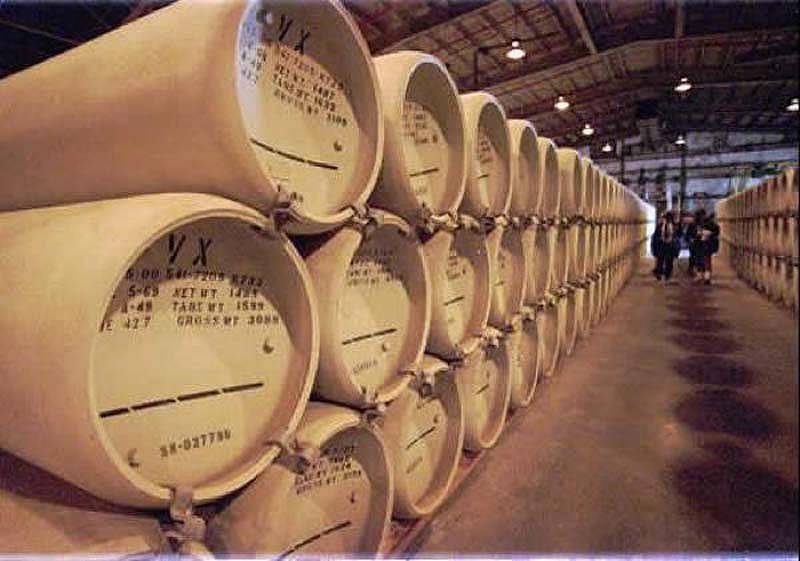
At the beginning of 60, the production of VX and the corresponding chemical munitions was created in the Soviet Union, initially only at a chemical plant in Volgograd, and then at a new plant in Cheboksary on the Middle Volga.
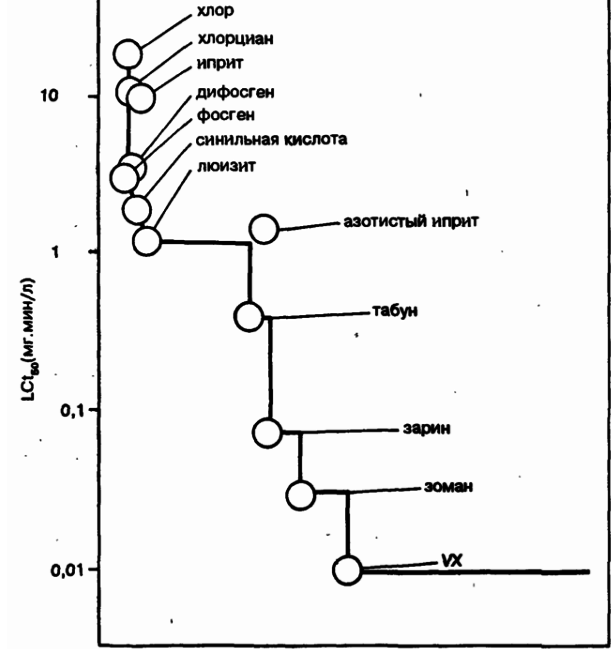
VX is about 10 more toxic than sarin. The main difference between the substance VX and sarin soman consists in its particularly high level of toxicity in the skin application. If the lethal doses of sarin and soman when exposed to the skin in the drip-liquid state are equal to 24 and 1,4mg / kg, respectively, then the same dose of substance VX does not exceed 0,1mg / kg.
Organic phosphorus toxic substances are characterized by a successful combination of high toxicity with physico-chemical properties that are close to ideal. They are mobile liquids that do not solidify at low temperatures and can be applied without restrictions in all weather conditions. Sarin, soman and VX substance are characterized by high stability, can be stored for a long time in special containers and housings of delivery vehicles, can be dispersed using explosives, by thermal sublimation and spraying from various devices.
Sarin, soman and substance VX can cause death in the case of exposure to the skin in the vapor state. The lethal dose of VX vapors is at the same time 12 times lower than that of sarin, and 7,5 - 10 times lower than that of soman. The noted differences in the toxicological characteristics of sarin, soman, and VX substances determine different approaches to their combat use.
Sarin is easily converted into vapor state or aerosol and, in this form, is suitable for inhalation lesions, as it has a rather small lethal dose (75 mg.min / m3). Doses of this level are not difficult to create targets on the square with the help of artillery and aviation ammunition, and in just 30 - 60 seconds spent by personnel of units to wear gas masks after receiving a chemical alarm signal. With this method of application, sarin does not create a persistent contamination of the terrain and weapons, which is why it can be used against enemy troops that are in direct contact with their troops, since by the time the enemy positions are captured, the sarin will disappear and the danger of their troops hitting will disappear. On the contrary, the use of sarin in the drip-liquid state is not effective because of its volatility and relatively low toxicity when exposed to the skin.
The substance VX is a high boiling liquid. It can be used in the form of a fine aerosol to cause lesions, like sarin, by inhalation, but such use of the substance VX is disadvantageous. The greatest effect is achieved in the form of a coarse aerosol with the aim of causing injuries, affecting unprotected areas of the skin. High boiling point and low volatility determine the persistence of VX droplets of matter in the atmosphere at a distance of tens of kilometers from the place of their release into the atmosphere. Due to this, it is possible to create lesion areas in 10 and more than the lesion areas more than once with the same substance transferred to the vapor state or to a fine aerosol.
During the time when a gas mask is put on, a person can inhale tens of liters of contaminated air. After putting on the gas mask, the effect of vapors and aerosol particles of a toxic substance on the living force practically stops. Protection against coarse aerosol or droplets of VX is much more difficult. In this case, along with the protection of the respiratory system (primary protection) it is necessary to protect the whole body from dropping poisonous substance. The use of protective properties only of a gas mask and a protective suit for everyday wear does not provide protection, for both a gas mask and protective jackets and pants do not by themselves cover the hands, as well as parts of the face and neck. Constant wearing of protective gloves and balaclavas is excluded by physiological and hygienic indicators. In addition, not all personnel can perform operations using protective gloves. The time spent on putting on additional items of protective clothing is calculated 3 — 5 minutes. During the time of putting on the gas mask, and then the items of protective clothing, on the human body, on its protected and unprotected skin in the form of a coarse aerosol with the aim of inflicting injuries, affecting the unprotected areas of the skin. High boiling point and low volatility determine the persistence of VX droplets when drifting in the atmosphere tens of kilometers from the place of their release into the atmosphere. Due to this, it is possible to create lesion areas in 10 and more than the lesion areas more than once with the same substance transferred to the vapor state or to a finely dispersed aerosol.
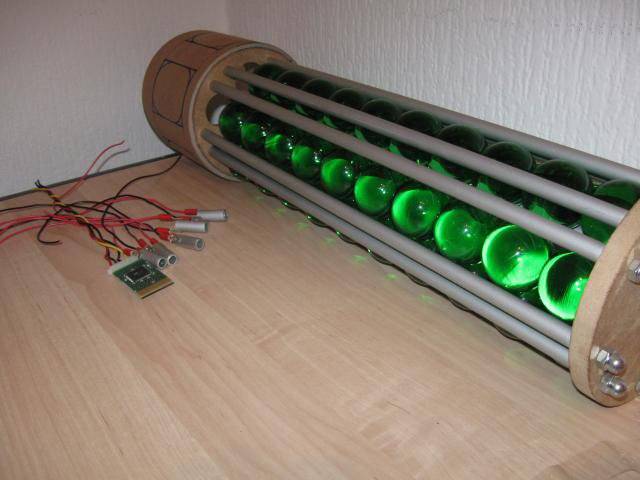
Toxic substances soman and VX, applied in an aerosol-droplet condition, cause a dangerous and long-term infection of uniforms or protective suits, personal weapons, combat and transport vehicles, engineering structures and terrain, which makes it difficult to protect against them. Particularly dangerous in this respect are moderately persistent toxic substances that can cause air contamination to dangerous limits and are characterized by an increased level of toxicity in the range of minimum effective doses.
Chemical weapons, if we count the time from the first gas balloon attack by chlorine in April 1915, there are seven decades. Over the years, the toxicity of toxic substances compared to the chlorine used at that time increased approximately 1900 times. The variety of armed and potential toxic substances, differing from each other in physicochemical properties and state of aggregation, nature of toxic action and levels of toxicity, significantly complicates the creation of means of chemical protection, especially antidote drugs, display systems and alerts. Difficult solvable problems against chemical protection persist primarily due to the threat of the use of highly toxic liquid toxic substances, since they are capable of inflicting damage not only through the respiratory system, but also upon contact with the skin. Gas masks and sets of skin protection equipment, even the newest ones, have an adverse effect on people, depriving them of normal mobility due to the aggravating effect and gas mask, and skin protection equipment, causing unbearable thermal loads, limiting visibility and other perceptions necessary to control combat means and communication with each other. Because of the need to conduct degassing of contaminated equipment and personnel, in some cases, the withdrawal of troops from combat is required. There is no doubt that modern chemical weapons are a formidable weapon and, especially, when used against troops that do not have adequate means of chemical defense, a significant combat effect can be achieved.
During the years of the "cold war", pursuing certain political goals, there was a frank hyperbolization of the damaging properties of toxic substances. It was argued that chemical weapons almost threatened the death of all mankind. Without detracting from the actual danger to people that a chemical weapon creates in the event of its massive use, it is necessary, however, to clarify the extent of this danger.
Say, if in such and such a country so many thousands of tons of toxic substances have been accumulated, then this number can supposedly kill such a number of people, which is calculated by dividing the entire mass of the stored toxic substance by the amount of its one lethal dose for one person. In the case of a substance VX with such a "calculation" it turns out that one thousand tons of it threatens death for 10 billion people. Such a calculation of the number of expected victims of chemical weapons was intended to intensify psychosis in society by intimidation, in order to carry out political and ideological sabotage.
In fact, with the actual use of toxic substances, not every lethal dose of the applied substance finds its victim. In this regard, chemical weapons are no exception. Fortunately for people, not every bullet fired in battle, and not every shard during the past wars reached the target, otherwise humanity would have died even from small arms.
The value of the "utilization rate" of toxic substances in their combat use can be estimated based on the consideration of the following scenario. Suppose a chemical attack is intended to destroy the enemy’s artillery battery. In this case, the shelling of chemical shells is conducted throughout its firing position, the area of which, according to the experience of past wars, is considered to be equal to 6 ha. The average battery list is approximately 60 people. Consequently, on the average for hitting one person, the area in 1000 м2 is shelled. When chemical shells and air bombs explode, air is contaminated in a layer at least 5 m high. Therefore, in order to cause a lethal defeat of one soldier or officer from the artillery battery, it is required to create lethal doses of a substance at any point in the airspace of 5 thousand m3. During the time when a gas mask is put on by trained personnel (30-60 seconds), a person can inhale 15 — 25 l of contaminated air. Thus, from 5 thousand m3 of contaminated air, only tens of liters of it fall into the respiratory tract of the affected or ten thousandth of a thousand percent of the poisonous substance used. Even with a full exposure, that is, with a chemical attack on unprotected living force, the value of the "utilization rate" of the applied chemical does not exceed a thousandth of a percent. But even with such low "coefficients", the accumulated reserves in the world of toxic substances were actually quite enough to destroy tens of millions of people. The civilian population, which does not have the means of protection and the skills to use it, is especially vulnerable.
The development of chemical weapons reached its peak in the 70s, when the so-called binary ammunition was created. The case of a binary ammunition is used as a chemical reactor, in which the final stage of the synthesis of a poisonous substance from two relatively low-toxic components is carried out. Their mixing in artillery shells occurs at the moment of firing, due to the destruction due to the tremendous acceleration of the dividing partition, the rotational movement of the projectile in the barrel channel enhances the mixing process. The transition to binary chemical munitions provides obvious benefits at the manufacturing stage, during transportation, storage and subsequent destruction of munitions.
Further research in the field of creation of promising models of chemical weapons did not lead to the adoption of fundamentally new types with higher lethal effects. No new, more toxic substances were obtained. The implementation of the binary weapons program did not lead to the creation of ammunition with increased destructive power. The improvement was carried out in the field of creating new optimal formulations and means of delivery. The entry into the arsenals of armaments of organophosphorus toxic substances of the nerve agent marked apogee in the development of chemical weapons. A further increase in its combat power does not occur and is not predicted in the future. Receiving new toxic substances, which in terms of toxicity would be superior to modern poisonous substances of lethal effect and at the same time possess optimum physicochemical properties (liquid state, moderate volatility, ability to cause damage when exposed through the skin, ability to be absorbed into porous materials and paint and varnish coatings and etc.) is not expected.
This, as well as the improvement of conventional weapons, the end of the Cold War and the extremely negative attitude towards the chemical weapons of the public led to the conclusion of the international "Convention on the Prohibition of the Development, Production, Stockpiling and Use of Chemical Weapons and Their Destruction."
However, work continues on the synthesis of new substances and the improvement of formulations that are not on the list of chemical substances to be eliminated. The field of use of chemical weapons from the battlefield has moved to the streets of cities as a "means of combating unrest" and into the arsenals of special services for "combating terrorism".
It is worth noting that, according to the disabling action, the most active of narcotic analgesics in terms of their level of action achieve the effect of neuro-paralytic agents, and some irritant surfactants are superior to old asphyxiation gases. They are quite capable, if necessary, to replace non-conventional agents.
Sources:
http://www.supotnitskiy.ru/book/book5_2_2.htm
http://www.komykak.ru/vitamini/vitamini4.html
http://gochs.info/p84.htm
http://www.knigi.dissers.ru/books/1/7310-5.php
N.S. Antonov. CHEMICAL WEAPON ON THE TURN OF THE TWO CENTURIES
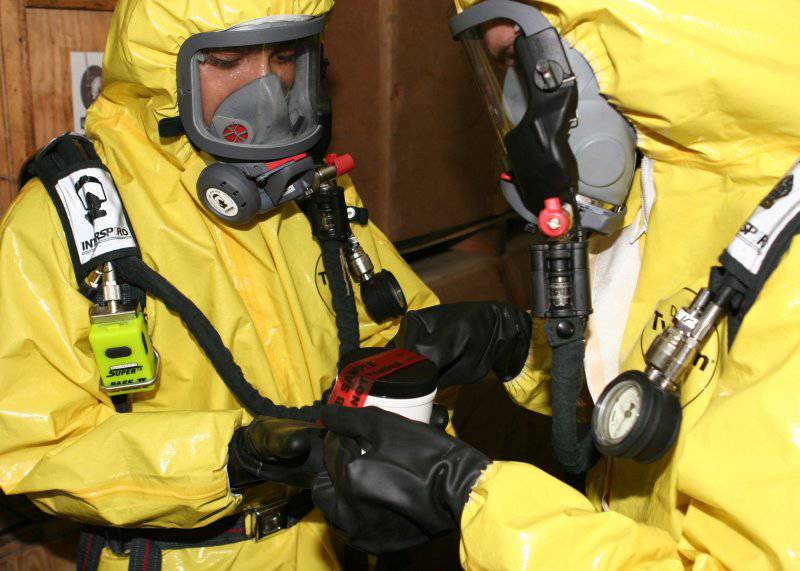
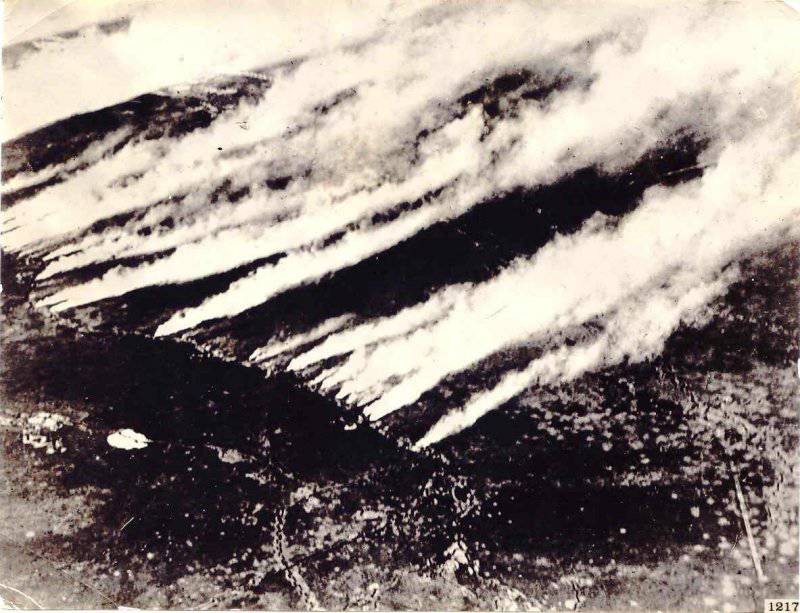
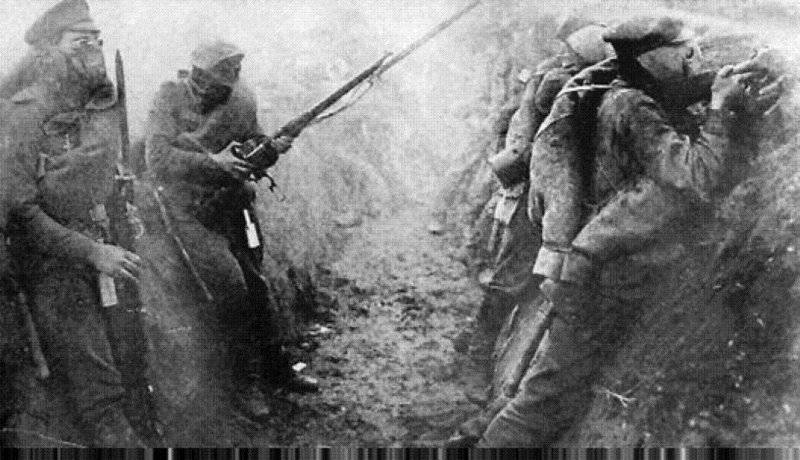
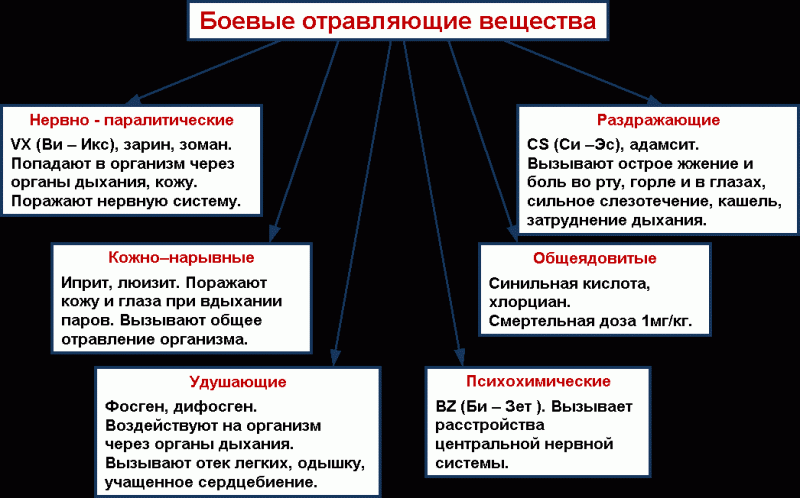
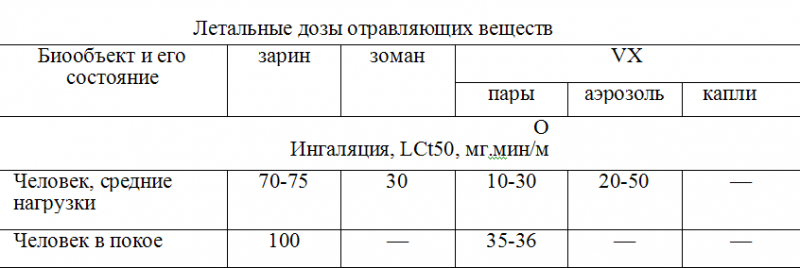
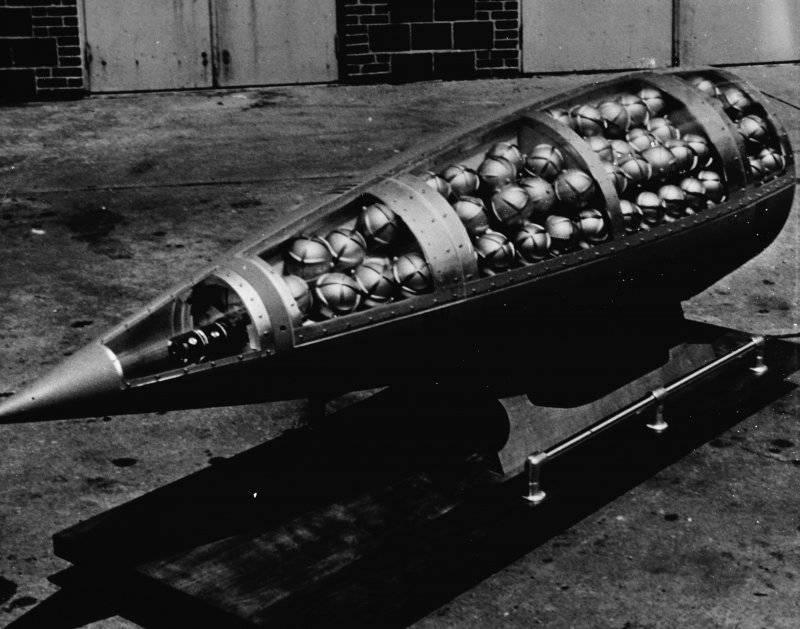
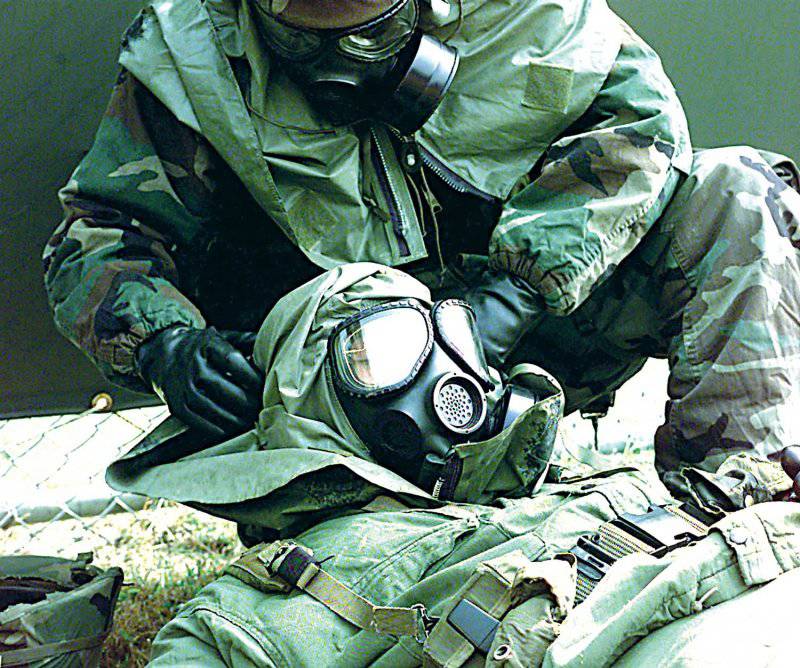
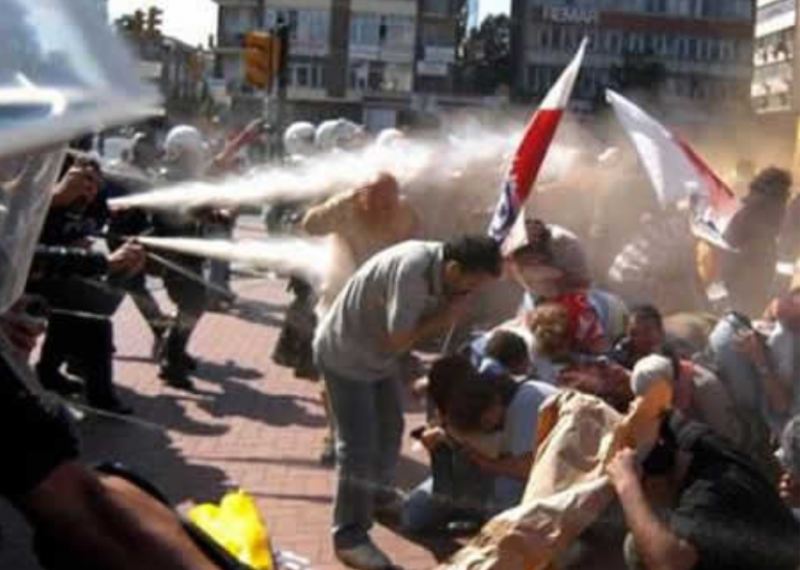
Information